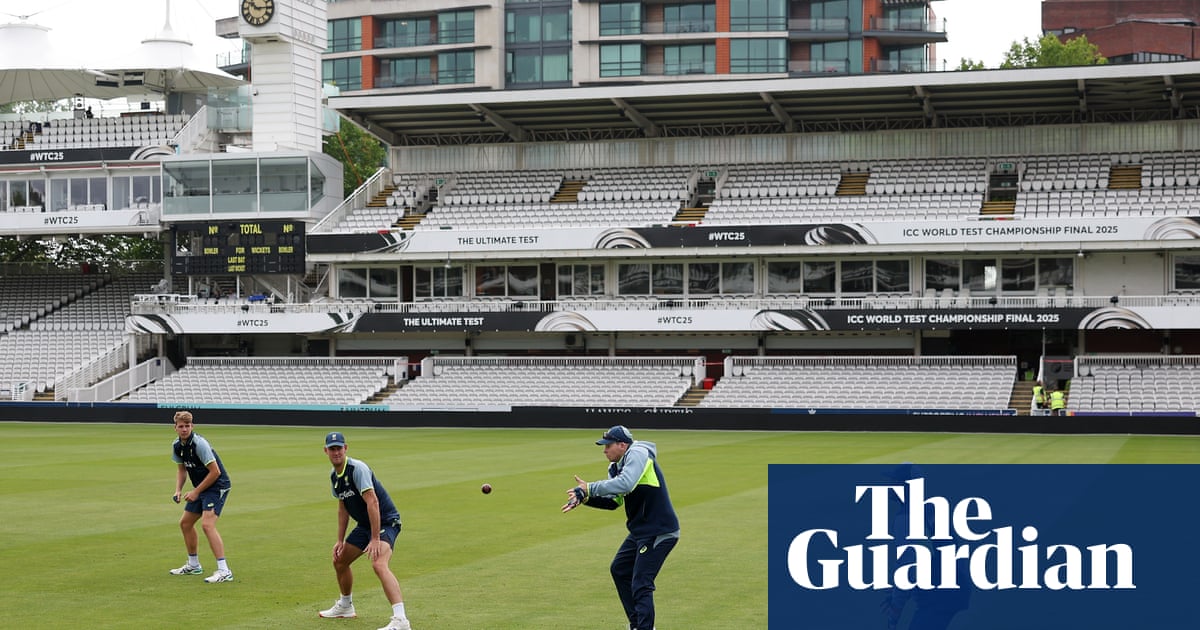It was the pandemic that forced the firstWorld Test Championshipfinal to be staged at the biosecure Rose Bowl in 2021, then commercial snags that led to it being held at the Oval two years later. But having been intended for both, Lord’s finally gets its chance this week, the defending champions Australia taking on South Africa for the right to lift the oversized Chupa Chup that is the ICC Test Championship Mace.
This will probably prompt eyerolls in some territories, even if June ruled out a fair number of them from acting as hosts. Another argument in favour of Lord’s is the ground’s history and prestige coupled with London’s diversity. Despite England not making the final, likewise India and their jet- set supporters, the first four days in St John’s Wood are sold out. Where else in the world could guarantee this turnout for a “neutral” final?
We may find out in time, with Jay Shah, the chair of the InternationalCricketCouncil, having stated a desire to move the final elsewhere (and almost certainly to India, one can surmise). But for the next five days – six if a reserve day is triggered by weather – it is the self-styled Home of Cricket that serves as the backdrop for what, in theory, is the pinnacle of the sport’s most storied format.
And in practice? That is where things get complicated. Only last week,Virat Kohli won the Indian Premier Leagueand immediately placed it “five levels” below anything he had achieved in Test cricket. Given Kohli’s status as the most successful captain in India’s history and trend-settinggalactico, it should follow that the final this week – a match with a cheque worth £2.6m waiting for the victors – is the most important fixture in cricket’s overstuffed calendar.
Yet for all the joy ofNew Zealand’s underdog triumphin 2021, orAustralia two yearslater, the WTC final is still to receive this kind of billing. Even this time around there is a case to say that the most impressive feat witnessed during the two-year cycle involved a couple teams who did not make it this far.Whether it is Pat Cummins or Temba Bavumaholding the mace aloft at the end of the week, New Zealand ending 12 years of Indian home dominance last November – storming that spin-heavy citadel for a 3-0 sweep – probably surpasses it.
But then perhaps this is missing the point of the WTC. Individual series wins can still sparkle in isolation and to know the best Test team in the world at any point in time, there are rankings available (rankings that currently have Australia in first ahead of England). Instead, its final is about the jeopardy of a one-off shot at silverware, the agony and the ecstasy of high-stakes cricket, and, perhaps more importantly, the journey that saw nine teams whittled down to two.
It is here where the detractors pipe up, citing the imbalance of the fixture list and a points percentage table that needs an enigma machine to decode it. As has been widely pointed out – albeit through no fault of their own – South Africa finished top on a diet of quickfire series and despite facing neither England or Australia. The flaws are obvious, the criticisms valid. But while the 2025-27 edition will have the same system, there are moves afoot to create a more coherent competition.
Assuming the red weed of franchise T20 cricket has not strangled the sport entirely – and, somewhat grimly, South Africa have no Test cricket at all in their next home summer – a personal view is that an all-plays-all format with (minimum) three-Test series must come in. And if this means four-day Test cricket for some and a four-year cycle, so be it. The only question here would be working out how to divvy up the points when India and Pakistan inevitably don’t play each other.
Sign up toThe Spin
Subscribe to our cricket newsletter for our writers' thoughts on the biggest stories and a review of the week’s action
after newsletter promotion
But whatever shape it takes in future, and however messy or tacked-on it has felt to date, the founding principle of the WTC – to give a wider context to bilateral Test series beyond the established rivalries – can be said to have been achieved already. You only have to rewind to Centurion last December for one such example,South Africa booking their place in the finalwith a nerve-shredding chase against Pakistan and the marauding Mohammad Abbas.
As for the head-to-head that day has produced, it may be that an Australia side with more than twice the number of Test caps in its squad still proves too strong. Both teams boast penetrative attacks capable of inducing a collapse but even with Marnus Labuschagne strong-armed into opening, the Australians look better equipped to withstand one. A day before the toss a flat beige pitch was unveiled, when a low-scoring shootout would possibly better suit the Proteas.
Although Bavuma’s players have had Stuart Broad in their corner this week, with his full-kit cameo as a coaching consultant proving that one of the sport’s best wind-up merchants can still do it in retirement. Havingswapped the bailsduring his Ashes farewell, perhaps Broad’s insight will help flip the script at Lord’s.
